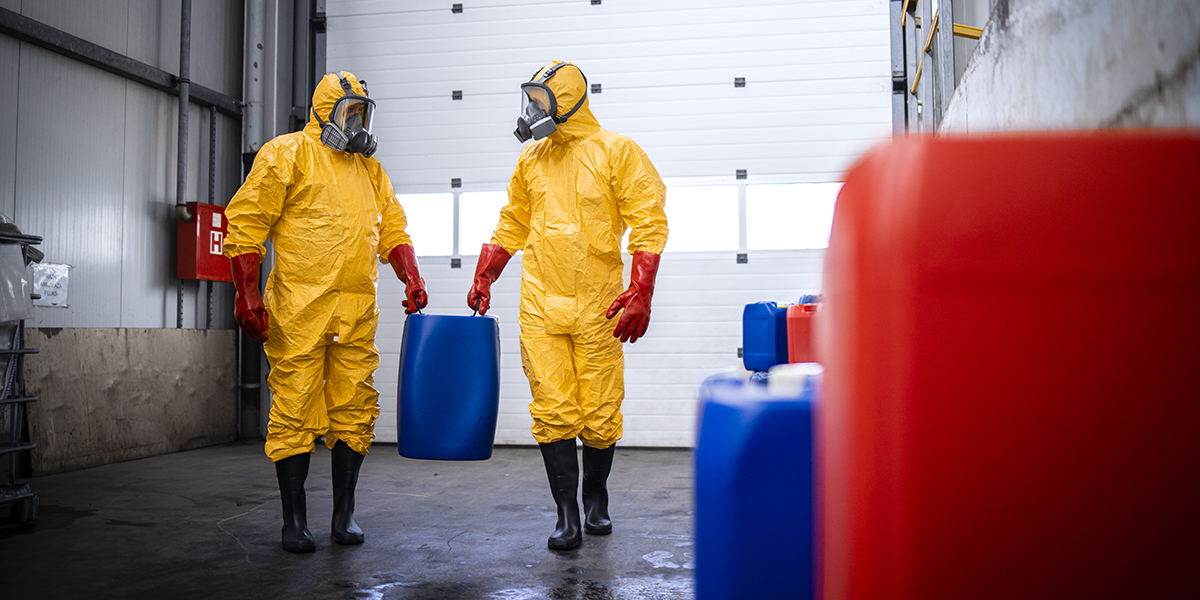Who Needs DOT Hazmat Training?

Companies and individuals alike ask, "Who needs DOT hazmat training?" Besides DOT requiring hazmat training, OSHA also has function-specific training regulations. Different nuances can exist between different OSHA and DOT agencies, making specific requirements confusing.
To help alleviate confusion, this guide details several hazardous materials training types and specific regulations regarding the usage, storage, and transportation of these materials. This guide also describes different employees and job roles that require hazmat training.
A Quick Overview of Who May Need Training
Before detailing specific types of hazmat training, let's first provide an overview of which employees may need training. When asking, "Who needs DOT hazmat training?" the simple answer includes anyone involved in hazardous materials requires training. Job functions affected can include the following:
- Purchasing hazardous material packaging
- Filling out paperwork or labels
- Preparing packages for shipment
- Loading and unloading hazardous materials
- Signing paperwork or inventory manifests
- Screening cargo, packages, or mail
- Transporting the hazardous material
- Supervising any of the above actions
Due to this wide range of actions, many different types of employees should receive training due to DOT or OSHA regulations:
- Mailroom clerks
- Supervisors
- Truckers
- Freight unloaders
- Administrative employees
- Warehouse or plant personnel
- Shipping and receiving employees
Agencies of the Department of Transportation Involved
DOT's 49 CFR 100-185 controls hazardous shipments for its agencies, including:
- Federal Motor Carrier Safety Administration (FMCSA)
- Federal Aviation Administration (FAA)
- Federal Railroad Administration (FRA)
- Pipeline and Hazardous Materials Security Administration (PHMSA)
- Any state agencies able to enforce these regulations
Different Types of Hazmat Training
The type of hazmat training an employee receives depends on their job or title. Most private companies and hazmat training follow regulation 29 CFR 1910.1200. Let's review the six main types of training you need to know:
- Hazard Communication: If an employee may potentially encounter hazardous materials, then they must complete Hazard Communication, allowing them to correctly identify such materials alongside key safety procedures.
- Hazardous Material Awareness Training: Employees likely to uncover any hazardous releases and have responsibility for contacting the proper authorities must undertake this emergency response information training.
- DOT Hazardous Material Safety and Security: Regulation 49 CFR 172 controls this type of training. Any hazmat employees working at places that receive, transport, or ship hazardous materials must complete this training, including employees that unload the freight.
- Hazardous Material Operations Level: Employees who may interact with hazardous material releases in an attempt to protect the environment, property, or nearby people require this training. Some employees can include supervisors and equipment operators.
- Hazardous Material Incident Command: Employees who manage teams dealing with hazardous materials must receive this type of training.
- Hazardous Material Technician Level: Employees responding to hazardous material releases and who attempt to stop these releases must receive this training. For example, those cleaning up hazardous material spills.
Improve Your Security Plan With FMCA Filings
FMCA Filings helps businesses and organizations comply with US DOT regulations alongside state regulations. Our service ensures your business complies with all the necessary regulations.